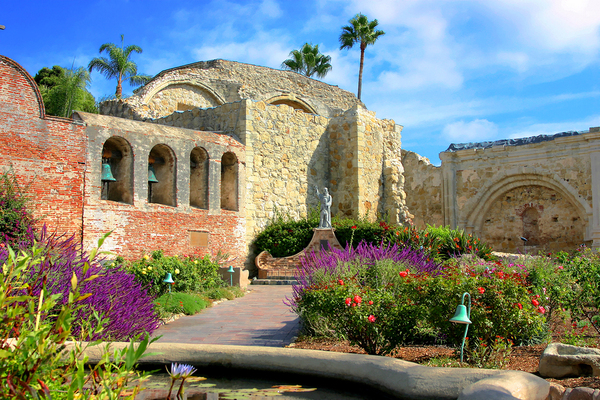The Golden State is known for several things besides sunshine, not the least of which are history, sustainability, and seismic activity. California architect continuing education addresses these issues with several courses that strengthen your knowledge base and broaden your horizons.
Here’s how PDH Academy meets your continuing education needs.
California is Known for the Rattle and Quake of Seismic Activity
Seismic activity is one of the best-known issues that affect the west coast. In Seismic Issues in Architectural Design, author, Christopher Arnold, says the structural system of a building is “directly related to its architectural configuration.” To a large degree, that determines the “size and location of structural elements such as walls, columns, horizontal beams, floors and roof structure.”
PDH Academy offers A Policy Guide to Steel Moment-Frame Construction for 3 AIA LU/HSW. This course addresses the strengths and weaknesses of steel moment frame construction under different stressors, including seismic activity. Welded steel moment-frame buildings are susceptible to damage from a seismic event, which makes this a relevant course for California architects.

You might never take on a preservation project as old as Mission San Juan Capistrano, but CA has lots of other historic property.
Historic Property Worth Preserving Exists Throughout California
Some of the oldest architecture in California is has stood for over 150 years. In fact, Thrillist says the Mission San Juan Capistrano is about 240 years old. The southern part of the state is peppered with classic midcentury modern architecture, as well. Historic preservation matters in a state with so much national and international acclaim.
Standards for the Treatment of Historic Property offers 11 credit hours. It covers the Secretary of the Interior’s Standards for preservation and protection of historically important buildings and how the Standards apply to exteriors and interiors. Students will learn the appropriate way to approach each historic project. The Preservation and Repair of Historic Stained and Leaded Glass offers 2 credit hours.
California is a Leader in Sustainability and Ecological Issues
California has a progressive reputation for preserving natural resources and protecting the environment. It’s no wonder the state is a leader in the sustainability in architecture movement. At the Green California Department of General Services, you’ll find a host of concerns that range from water conservation, sustainable government building design, solar power and a push for certified sustainable green hotels.
If sustainability and environmental protection is on your mind, PDH Academy has several courses that fit the bill.
- Sustainable Buildings AIAPDH121: 4 credit hours
- Green Roofs AIAPDH102: 3 credit hours
- Green Building Guidelines for New Home Construction AIAPDH123: 4 credit hours
- LEED for Existing Buildings: Recertification Guidance (2013) AIAPDH104: 4.5 credit hours
- LEED for New Construction Application for Multi-Building Campuses AIAPDH105: 1.5 credit hours
- Energy Performance of LEED for New Construction Buildings AIAPDH106: 2 credit hours
- Cost and Financial Benefits of Green Buildings AIAPDH109: 9.5 credit hours
- Green Buildings and Climate Resilience AIAPDH110: 7 credit hours
- Bird Friendly Building Design AIAPDH120: 3 credit hours
- Sustainable Design and Green Building Toolkit AIAPDH139: 7 credit hours
Along with standard courses, California architect continuing education covers topics that matter most to the state. Finding the right courses shouldn’t have to cut into your daily work schedule, either. With PDH Academy, the credits that you need are available in a convenient, online format. Once you complete a course, we’ll report your credits earned to the AIA on your behalf.
Ready to get some of your required coursework out of the way? Check out our courses for architects today.







